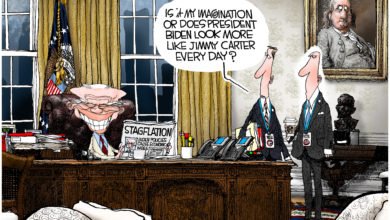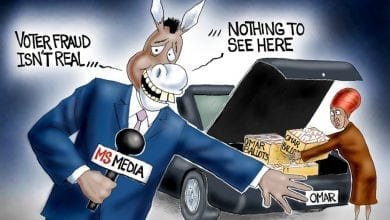40,000 Traffic Fatalities a Year Is Not Acceptable. So Why Do We Accept It Year After Year?
US highway authorities are bemoaning the recent increase in highway fatalities. And, well, they should. With an annual death rate of 40,000 per year on our nations’ roads and streets, the situation is—to say the least—highly regrettable.
Like good bureaucrats, these folks do not intend to stand idly by and do nothing about this scourge. Instead, they intend to implement a myriad of policies tried in the past—which have failed.
For example, the US Department of Transportation shall be addressing “issues ranging from speed limits to emergency medical care.” But this is merely the tip of the iceberg. They shall also be improving “street lighting” and “reducing alcohol-impaired driving.”
Nor does this complete their to-do list. There is also “stricter enforcement of speed limits, seatbelt mandates and drunken-driving laws; better designed roads, especially in poorer neighborhoods; more public transit; and further spread of safety features like automated braking.”
Never fear, Pete Buttigieg, the transportation secretary, is on the job.
“We’ve got to look at what’s working and lift up those communities and those jurisdictions that are doing the best job, in addition to finding measures and performance expectations that will hold those accountable who haven’t been keeping up,” says Buttigieg.
Hey, don’t knock this. None of these nostrums have ever been tried before. Surely, this time, they will work!
Let us sit back and take a deep breath on this matter.
Suppose there was a meeting of the USSR central planning bureau, agricultural division. They were bewailing the poor quantity and quality of produce on the nation’s farms. They resolved to use better crop rotation, more fertilizer, leaving lands idle once every seven years in order to improve fertility, the importation of new varieties of products, better extermination of pests, more and improved tractors, education for the farm workers, and such.
Now suppose someone burst into these deliberations and said the following: “But we’ve already tried all these things. Every last one of them. We’re still in the same pickle. Have we not learned anything from the fact that our collectivized farms comprise 97% of the acreage of country, and grow 75% of the crops, while from the farm workers’ private gardens emanate 25% of the crops, on land amounting to 3% of the total? Let us privatize all Russian farms!”
Undoubtedly, in the USSR such an interloper would have been summarily shot.
I hope and trust this fate will not befall me since I advocate that very same solution for our nation’s highways. Privatize ‘em all.
Although I will not of course be shot for saying this, the same level of incredulity is likely to greet my suggestion, as would have been the reaction to this hypothetical free-enterprise Soviet economist.
People will say, well, you can indeed privatize agricultural land, but highways and streets are another kettle of fish. It simply cannot be done! They are a natural public good. (This latter bit of invincible ignorance means they were mistaught introductory microeconomics.)
Wrong. The first private roads date back to England, before the 10th century. During revolutionary times in the US many streets were private post roads. They would charge fees based upon the number of horses and axels in those dirt road days. They even based charges on width of wheels; narrow—think ice skates which put ruts in the road—cost more; wide—think steam rollers which flattened it out—less.
Of course we need to reduce drunk driving, driver inattention, speeding, vehicle breakdowns, etc. But we need private managers to do so, in competition with one another. Have we not yet learned the economic aphorism that competition tends to create a better product at a lower cost? Who says that one set of rules for the entire nation, emanating from Washington DC is the best way to approach this or any other problem? Maybe what should be addressed is not only the level of speed, but its variance? Perhaps each lane should have its own speed limit, not a minimum of 40 and a maximum of 70 all throughout. We must think outside the box if we are to make any progress in making driving safer.
How long will we have to wait to even seriously contemplate the privatization of this important aspect of our economy? Do we as a society want to radically reduce these horrendous traffic fatality statistics, or don’t we? If so, it behooves us to think radically, not in the same old tired ruts.
[Editor’s Note: For further reading, see Walter Block’s book The Privatization of Roads and Highways: Human and Economic Factors; Auburn, AL: The Mises Institute; 2009.]
Content syndicated from Fee.org (FEE) under Creative Commons license.





Clearly an issue that needs federal attention and we have several agencies charged with highway safety issues. Just don’t count on Buttigieg for leadership! He is just another of the Biden cabinet incompetents!
I’ve investigated “accidents” in a major northeast city for 25 years and with few exceptions the fatals boil down to one or more of three causative factors:
Speed
Impairment
Recklessness
We have an energy crises and we have an unacceptable number of traffic fatalities. Why not kill two birds with one stone and mandate/enforce a NATIONAL 55mph speed limit?